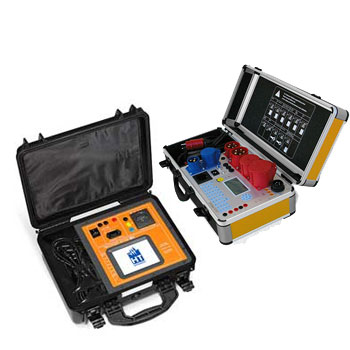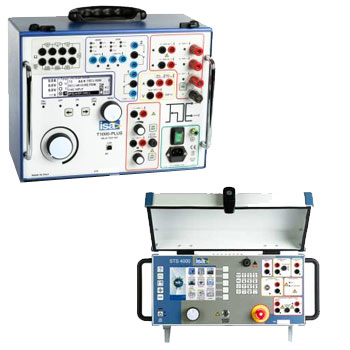- Compact design
- Low maintenance costs
- Stable and reliable level detection, unaffected by flow, bubble formation, vibrations, build-up or solids in the medium

 Datasheet Datasheet |
 User Manual User Manual |
- Compact design
- Low maintenance costs
- Stable and reliable level detection, unaffected by flow, bubble formation, vibrations, build-up or solids in the medium

 Datasheet Datasheet |
 User manual User manual |
- Robust design for the process industry
- Explosion-protected version
- Low maintenance costs
- Stable and reliable level detection, unaffected by flow, bubble formation, vibrations, build-up or solids in the medium

 Datasheet Datasheet
|
 User Manual User Manual
|
Pointek CLS100 is an RF inverse frequency shift capacitance point level switch for liquids and solids or liquid interface applications. Unique product design allows for senstivity adjustment to tune out and ignore buildup.

 Datasheet Datasheet
|
 User Manual User Manual
|
Pointek CLS200 is an RF inverse frequency shift capacitance point level switch for liquids and solids or liquid interface applications. Unique product design allows for senstivity adjustment to tune out and ignore buildup. With a selection of options including PROFIBUS communications, digital displays, remote or local testing, and functional safety SIL2 ensures safety and ease of integration.

 Datasheet Datasheet
|
 User Manual User Manual
|
Pointek CLS300 is an inverse frequency shift capacitance level switch with optional rod/cable choices and configurable output. It is ideal for detecting liquids, solids, slurries, foam and interfaces in demanding conditions where high pressure and temperatures are present.

 Datasheet Datasheet
|
 User Manual User Manual
|
SITRANS LVL100 is a compact vibrating level switch for liquid and slurry applications such as overflow, high, and low level detection. Also ideal for pump protection, safety backup and confined spaces.
 Datasheet Datasheet
|
 User Manual User Manual
|
- Testfunktion einschließlich Remoteoptionen
- Fehlerüberwachung auf Korrosion, Ausfall der Schwingung oder Leitungsbruch zum Piezoantrieb
- Kompakte Bauweise
- Geringe Eintauchtiefe ab 40 mm (1.57")
- Optionen für extreme Drücke und Temperaturen

 Datasheet Datasheet
|
- Ease of setup with no calibration and rotatable enclosure
- Suitable for low bulk density materials starting at 30 g/l (1.9 lb/ft³)
- Adjustable sensitivity for varied applications

 Datasheet Datasheet
|
 User Manual User Manual
|
- High resistance to mechanical forces
- Strong vibration resistance to high bulk material loads
- Rotatable enclosure
- Suitable for low density material: standard version, 20 g/l (1.3 lb/ft³); liquid/solid interface version, 50 g/l (3 lb/ft³), and low density option min. 5 g/l (0.3 lb/ft³)
- Customer desired extensions up to 20 000 mm (787”)
- Optional detection of solids within liquid
- Durable short fork option with 165 mm (6.5 inch) insertion length

 Datasheet Datasheet
|
 User Manual User Manual
|
SITRANS LPS200 is a rotary paddle switch for point level detection in bulk solids. Ideal for point level or safety backup applications with SIL 2 and motor failsafe detection.

 Datasheet Datasheet
|
 User Manual User Manual
|
The Pointek ULS200 is an ultrasonic non-contacting switch with two switch points for level detection of bulk solids, liquids and slurries in a wide variety of industries; ideal for sticky materials.
 Datasheet Datasheet
|
 User Manual User Manual
|
SITRANS LT500 is the next evolution of level, flow, and pump controllers for radar transmitters – or any 2-wire 4-20 mA device. It is the first choice for radar sensor measurements at 80 GHz and features single and dual point measurements, 6 relays, and Modbus RTU, HART, PROFIBUS DP, PROFIBUS PA, PROFINET.
 Datasheet Datasheet
|
 User Manual User Manual
|
SITRANS LUT400 are compact, single point, long range ultrasonic controllers for continuous level or volume measurement of liquids, slurries, and solids, and high accuracy monitoring of open channel flow.
- SITRANS LUT420 Level Controller: level or volume measurement of liquids, slurries, and solids, as well as basic pump control functions, and basic data logging capability.
- SITRANS LUT430 Level, Volume, Pump and Flow Controller: includes all features of the LUT420 plus a full suite of advanced pump control and alarm functionality, open channel flow monitoring, and basic flow data logging capability.
- SITRANS LUT440 High Accuracy OCM: Our most featured, highest accuracy model. Includes all features of the LUT430, plus the industry’s best accuracy (± 1 mm within 3 m), full suite of advanced control functionality, and enhanced flow logging capability.
 Datasheet Datasheet
|
 User Manual User Manual
|
MultiRanger/HydroRanger is a versatile short- to medium-range ultrasonic single- and multi-vessel level monitor/controller for virtually any application in a wide range of industries. MultiRanger/HydroRanger can be used on different materials, including fuel oil, municipal waste, acids, woodchips or on materials with high angles of repose.
 Datasheet Datasheet
|
 User Manual User Manual
|
MultiRanger/HydroRanger 200 HMI is a versatile short- to medium-range ultrasonic single- and multi-vessel level monitor/controller for virtually any application in a wide range of industries.
 Datasheet Datasheet
|
 User Manual User Manual
|
SITRANS LVS300 is a vibrating rod point level switch for high, low, or demand level detection of bulk solids in bins, silos, or hoppers. The durable single rod probe avoids bridging and withstands harsh application conditions. The LVS300 has a compact design and can be top, side or angle mounted. The vibrating rod design ensures the product will not be impacted by bridging of traditional forks in applications with buildup potential. A durable probe design ensures the product will withstand heavier materials without damage or bending

 Datasheet Datasheet
|
 User Manual User Manual
|

Point Level Detection – safe min/max monitoring in liquids & bulk solids
Point level switches reliably indicate empty, full or alarm states to prevent dry-run, overfill and product loss. Depending on medium and process, options include vibrating forks, capacitive and conductive probes, optical sensors, floats, rotary paddles (bulk solids), microwave barriers, thermal switches and pressure/diaphragm switches.
Features (model-dependent): hygienic design (EHEDG/FDA), ATEX/IECEx, SIL, proof-test functions, IO-Link/HART, PNP/NPN/relay, fail-safe modes, high IP ratings and robust process connections (clamp, Varivent, G/NPT, flange).
ICS Schneider Messtechnik supports principle selection, materials, installation location, parameterization and PLC/SCADA integration—including calibration and documentation.
FAQ on Point Level Detection
Answers on technologies, media, hygiene/ATEX/SIL, mounting, setup, troubleshooting and best practices.
Which switching principle fits my medium?
| Principle | Media | Strengths | Notes |
|---|---|---|---|
| Vibrating fork | Liquids/bulk solids | Universal, low maintenance | Usually tolerant to foam/build-up (self-monitoring) |
| Capacitive | Liquids/pastes/bulk | Very versatile | Tune sensitivity for product adhesion |
| Conductive | Aqueous media | Robust, economical | Requires minimum conductivity |
| Optical | Clear/clean liquids | Compact, fast | Watch contamination/fogging |
| Float | Liquids | Simple, no setup | Needs mechanical movement/space |
| Rotary paddle | Bulk solids | Proven, rugged | Grain size/density dependent; bearing care |
| Microwave barrier | Bulk, aggressive | Non-contact, through-wall possible | Use suitable window/adaptation |
| Thermal | Gases/liquids | No moving parts | Consider flow/temperature influence |
| Pressure/diaphragm | Pipes/vessels | Simple, direct | Medium/pressure dependent |
What’s the difference between Max, Min and Fail-safe?
Max switches at the upper threshold (overfill protection). Min switches at the lower threshold (dry-run protection). Fail-safe defines behavior on fault (e.g., cable break, device error)—often selectable as de-energized-safe for min or max duty.
How do I choose the right process connection?
Based on pressure/temperature, cleanability and space: G/NPT, clamp/Varivent (hygienic), flange (PN/ANSI). For tanks with agitators, choose reinforced forks/probes.
How do foam and build-up affect switching?
Vibrating forks with auto-adjust and strong excitation are highly tolerant. Capacitive sensors: adjust coupling/sensitivity. Optical sensors: consider heating/rinsing against fogging/fouling.
What repeatability can I expect?
Typically ±2…5 mm for forks/optical. Capacitive depends on medium but can be excellent after teach-in. Bulk devices depend on grain size/density.
Which materials and seals are available?
| Part | Materials | Use |
|---|---|---|
| Wetted parts | 316L, 1.4571, Hastelloy®, titanium, PVDF/PTFE | Chemical, seawater, hygiene |
| Seals | EPDM, FKM, PTFE, FFKM | Media/temperature compatibility |
| Windows (MW barrier) | PTFE, ceramic | Abrasive/corrosive, high T |
Which electrical outputs are supported?
PNP/NPN, relay, Namur (Ex i), 4–20 mA with limit, IO-Link, and in some cases HART. For safety loops use dual-channel evaluation and SIL-certified devices.
How is parameterization/teach-in performed?
Via keys/display or IO-Link/HART: set mode (min/max), sensitivity, on/off delays, window function, fail-safe and medium presets.
Where should I place the switch?
- Min protection: below the pump outlet/suction nozzle, in a calm zone.
- Max protection: keep distance to the roof for cleaning/fork oscillation.
- Bulk solids: away from the fill cone, slightly angled downwards if side-mounted.
How do I handle high temperatures/pressures?
Use high-temperature variants or a neck extension; select pressure rating per datasheet (e.g., up to PN40+). For CIP/SIP choose hygienic, flush designs.
What matters for hygienic design?
Dead-space-free (clamp/Varivent), polished surfaces, EHEDG/FDA seals, flush sensor geometry, CIP/SIP resistance and complete material certificates.
Are ATEX/IECEx & SIL options available?
Yes—devices with Ex i/Ex d and SIL2/3 exist. In hazardous areas use suitable barriers, cabling and bonding; document proof-test intervals.
How robust is operation with changing media (density/εr)?
Vibrating forks are largely density independent. Capacitive switches may need a second recipe/auto-adjust. Conductive probes depend on conductivity—observe limits.
How do I avoid false trips from turbulence/flow?
Enable delays (e.g., 0.5–2 s), use a stilling tube, mount away from inlets, and align forks across the main flow.
What cabling/IP ratings are typical?
IP65…IP69K depending on model; use glands with strain relief. For washdown areas, select IP69K/hygienic connectors.
Can I use window/two-point control?
Yes—many electronics offer a window function (two setpoints) for band control; alternatively use two devices for fill/drain control.
How are devices proof-tested?
Via test magnet, pushbutton or simulation mode (type-dependent). Set intervals per SIL verification and record results.
Typical pitfalls & quick fixes
- Wrong mode (min/max) → check parameterization
- Fouling/crust → cleaning interval, choose flush design
- EMC coupling → shielded wiring, equipotential bonding
- Poor mounting point → avoid inlets/flow, add calming
- Low conductivity (conductive) → select another principle
How do I integrate switches into control systems?
Use digital inputs for PNP/NPN/relay, IO-Link for parameterization/diagnostics; evaluate heartbeats/alarms. Implement fail-safe logic in the PLC.
Do you support selection & commissioning?
Yes. We define setpoints, choose the principle/materials, provide calibration certificates, support hygiene/Ex documentation and integrate into PLC/SCADA/IIoT.



























































































































































































